Super Flower Leadex Platinum 550W PSU Review
Super Flower responds to the high demand for low-capacity and highly efficient PSUs with the release of its Leadex Platinum with 550 W max power. This unit packs high performance, silent operation and Platinum efficiency.
Why you can trust Tom's Hardware
A Look Inside And Component Analysis
Parts Description
Before proceeding, we strongly encourage you to review our PSU 101 article, which includes valuable information about PSUs and their operation, allowing you to better understand the information provided below.
Our main tools for disassembling PSUs are a Thermaltronics soldering and rework station and a Hakko 808 desoldering gun.
| Primary Side | |
|---|---|
| Transient Filter | 4x Y caps, 2x X caps, 2x CM chokes, 1x MOV |
| Inrush Protection | NTC Thermistor & Relay |
| Bridge Rectifier(s) | 1x |
| APFC MOSFETS | 2x Infineon IPA50R250CP (550V, 9A @ 100°C, 0.25 Ohm) |
| APFC Boost Diode | 1x CREE C3D04060A (600V, 6A @ 135°C) |
| Hold-up Cap(s) | 1x Nippon Chemi-Con (400V, 560uF, 2000h @ 105°C, KMQ) |
| Main Switchers | 2x Infineon IPI50R199CP (550V, 11A @ 100°C, 0.199 Ohm) |
| APFC Controller | Infineon NCP1653A |
| Switching Controller | AA9013 |
| Topology | Primary side: Half-Bridge & LLC Resonant Converter Secondary side: Synchronous Rectification & DC-DC converters |
| Secondary Side | |
| +12V MOSFETS | 4x Infineon IPP041N04N G (40V, 80A @ 100°C, 4.1 mOhm) |
| 5V & 3.3V | DC-DC Converters: 2x Infineon IPD060N03L G PWM Controller:2x NCP1587A |
| Filtering Capacitors | Electrolytics: Nippon Chemi-Con (105°C, KY, KZE) Polymers: Nippon Chemi-Con |
| Supervisor IC | AA9013 & LM324ADG |
| Fan Model | Globe Fan RL4Z-B1352512M (135 mm, 12 V, 0.28 A, 90.68 CFM, 1200 RPM, DBB) |
| 5VSB Circuit | |
| Rectifier | 1x Mospec S10C60C SBR |
| Standby PWM Controller | 29604 |



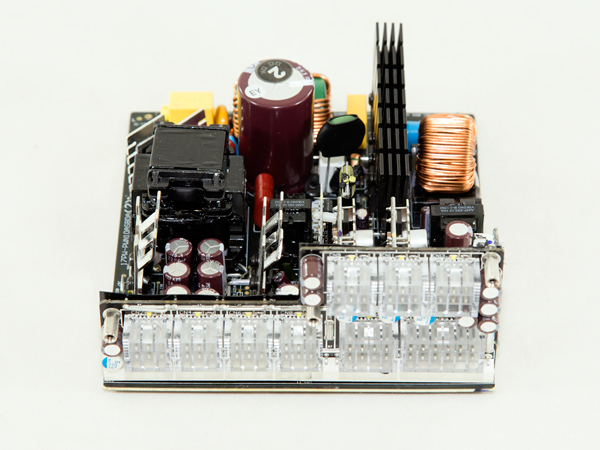

The SF-550F14MP PSU uses a modern platform identical to the one used by the EVGA 550 G2 model, which we reviewed a while ago, with some modifications that allow for higher efficiency in order to meet the 80 Plus Platinum requirements. In the primary side, a half-bridge topology is used along with an LLC resonant converter, while in the secondary side, we see synchronous rectification along with two DC-DC converters for the generation of the minor rails. The PCB is small and crowded with components, especially in the secondary side where an increased number of caps filter ripple. The APFC heat sink is large for a Platinum PSU, while the +12V heat sinks are quite small, though they will provide decent heat dissipation. The selection of components is top-notch, and Super Flower uses only high-quality Japanese capacitors, which increase this PSU's reliability and at the same time offer good performance over time. (Japanese caps age much more slowly than Taiwanese and Chinese capacitors.)




The small PCB behind the AC receptacle doesn't hold any components. All EMI components are on the main PCB, including four Y and two X caps, a pair of CM chokes and a metal-oxide varistor (MOV). The NTC thermistor — which protects against large inrush currents — along with the corresponding relay are installed right next to the bulk cap.
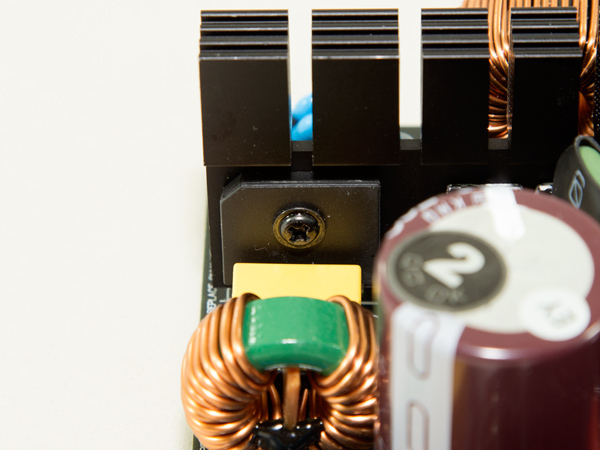



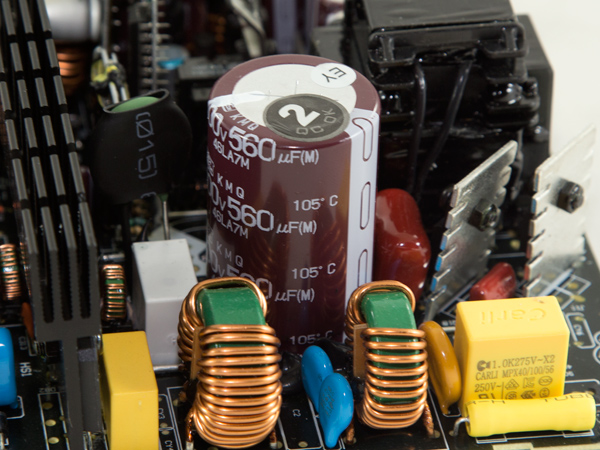


The single bridge rectifier is cooled down by the APFC heat sink; the heat sink's markings are hidden from view so we couldn't identify it without some serious desoldering, which we chose to avoid. The APFC converter uses a pair of Infineon IPA50R250CP FETs along with a single-boost diode (CREE C3D04060A). The EVGA 550 G2 (aka Leadex Gold 550 W) uses a single FET in the APFC, which leads to increased energy losses, especially at higher loads.
The bulk cap is provided by Chemi-Con (400V, 560uF, 2000h @ 105 C, KMQ). (The EVGA 550 G2 uses a smaller bulk cap with 470uF capacity.) This cap looks like it would have enough capacity to allow for adequate hold-up time; however, during our tests we found that the PSU unfortunately doesn't meet the minimum hold-up time that the ATX spec requires. Finally, the APFC controller is an NCP1653A, provided by ON Semiconductor. This IC is installed on a small vertical PCB, which is covered by insulation tape in an effort to decrease EMI noise.
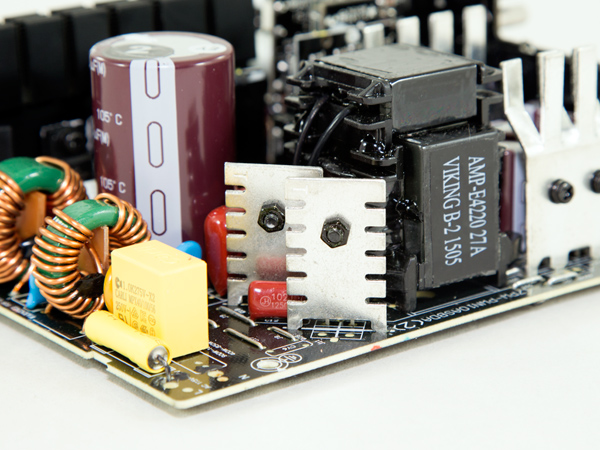



Two Infineon IPI50R199CP FETs are used as main switchers. These FETs are installed on two small heat sinks and are arranged in a half-bridge topology. An LLC resonant converter is used to provide an efficiency boost by lowering energy losses on the primary FETs. The LLC resonant converter is a proprietary IC with the model number AA9013. This IC, which is installed on a vertical daughterboard in the primary side, is made by Super Flower, and so far there is no information available about its specifications and operation. On the same board as the AA9013 IC is the LM324ADG quad operation amplifier (op-amp), which assists in the protection features section.
Get Tom's Hardware's best news and in-depth reviews, straight to your inbox.







Two small heat sinks in the secondary side host the four Infineon IPP041N04N G FETs that regulate the +12V rail. The EVGA 550 G2 unit uses exactly the same type and number of FETs in this section. Finally, the filtering of the +12V rail is handled by several electrolytic caps along with a single polymer cap, all of which are provided by Chemi-Con and are rated at 105 C.

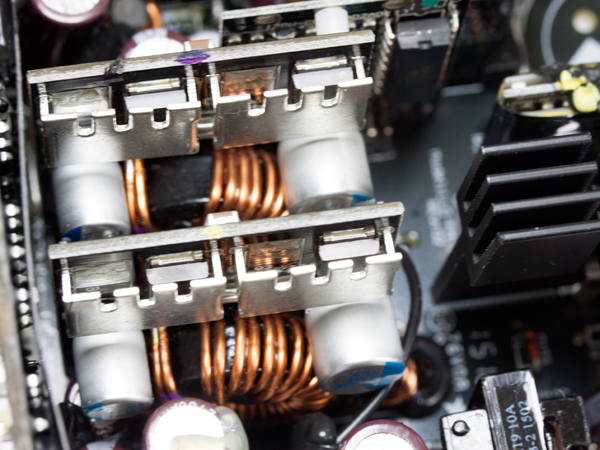


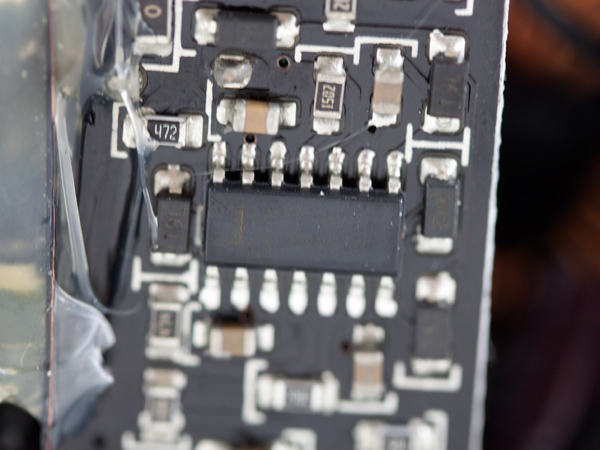
A couple of DC-DC converters generate the minor rails through the +12V rail. Each one of the converters is housed on a vertical PCB hosting a pair of Infineon IPD060N03L G FETs along with an NCP1587A PWM controller. As you can see from the photos above, metal shields surround the FETs providing EMI protection. In front of the VRMs is the fan control PCB that houses an LM324ADG op-amp. As is typical for a Leadex-based PSU — because the base of this PCB can easily break if you try to detach the fan header — the first thing we did once we cracked open the PSU was to apply lots of glue to secure it in place.
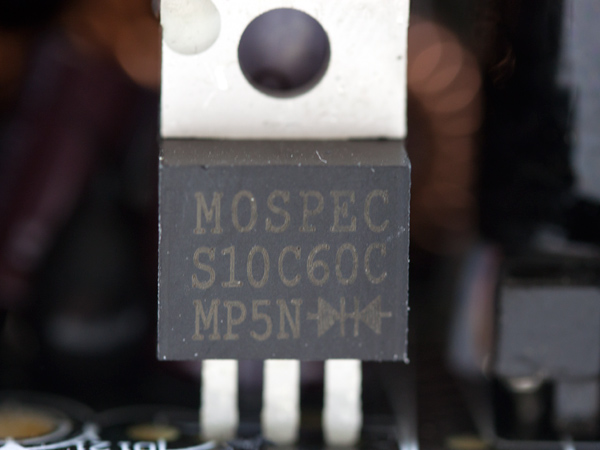

Right next to the fan control PCB is a Mospec S10C60C SBR, which regulates the 5VSB rail. The standby PWM controller is a small IC with a "29604" marking on it, which gave us no results on search engines.

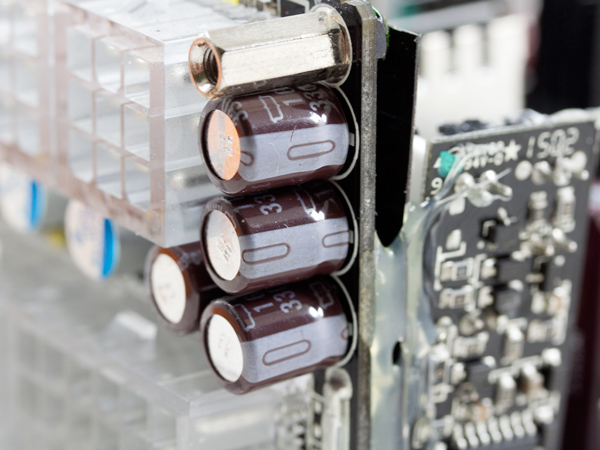


On the front of the modular PCB several Chemi-Con polymer and electrolytic caps provide some extra ripple filtering.






Soldering quality is good overall but definitely not top-notch and in some areas it is only average. Given this PSU's high price, we can't help but be extra picky when it comes to soldering quality and we strongly believe that nobody will blame us for this. Perhaps the increased demand for PSUs applied stress on Super Flower's manufacturing lines, affecting quality control. If this is the case, Super Flower should either manufacture fewer PSUs or use other factories to meet demand and attain higher quality standards.
The cooling fan, which is the same one that's used in the EVGA 550 G2 unit, is made by Globe Fan, model number RL4Z-B1402512M (140 mm, 12 V, 0.3 A, 1200 RPM, 92.16 CFM, 24.9 dBA). It uses double ball bearings, which means that it will last for quite a long time, especially since it isn't engaged at light and medium loads if you activate the ECO Mode. This is a low-speed fan that won't output a loud noise even at its full speed. In addition to the relaxed fan profile, this fan offers the PSU a super-quiet operation.
Current page: A Look Inside And Component Analysis
Prev Page Packaging, Contents, Exterior And Cabling Next Page Load Regulation, Hold-Up Time And Inrush Current
Aris Mpitziopoulos is a contributing editor at Tom's Hardware, covering PSUs.
-
laviniuc you mean P2, right?Reply
"This means that we will most likely see an EVGA SuperNOVA 550 T2 unit in the near future." -
envy14tpe The 650W version sells for $85usd (here in Taiwan) and 750W for $100. Not sure why this company doesn't sell more internationally since it is at the top tier. As it is known for quality. Gonna be picking up a SuperFlower PSU with my next build.Reply -
casey_souder Replyactually it did and still says that 10C is 50F.
A change of 1 degree C equals a 1.8 degree F change. Google is doing a temperature conversion, not a unit conversion. -
Roj Number 1 Yes, 10C = 50F, but a 10C increase in temperature is a 18F increase in temp. Two different things.Reply
